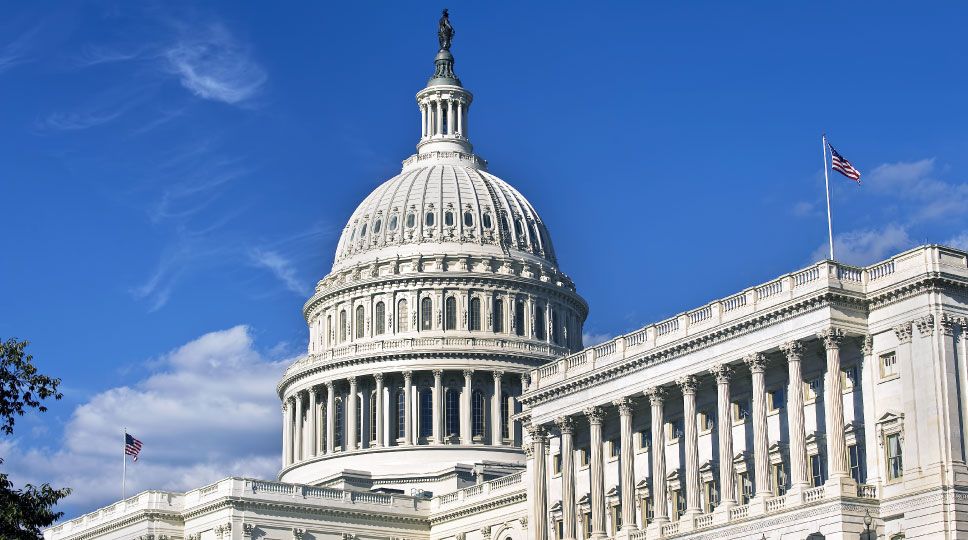President Biden is ordering federal agencies to kick into high gear on sustainability; and, to meet the president’s directive, federal managers should double down on energy conservation through insulation by including removable and reusable thermal insulation blankets and shields. These solutions have already proven to benefit federal facility managers and owners who want to reduce CO2 and other GHG emissions. Recently, President Biden issued his “Executive Order on Catalyzing Clean Energy Industries and Jobs Through Federal Sustainability.” The president’s order and Shannon GES’ mission go hand in hand because both promote transforming the management of buildings and other operations to be clean and sustainable.
Biden’s executive order includes several aims, but the following goals for federal agencies are among the most ambitious:
- use only carbon pollution-free electricity on a net annual basis by 2030,
- reach a net-zero emissions building portfolio by 2045, and
- by 2030, reduce federal agencies’ emission of scope 1 and 2 greenhouse gas 65 percent, using 2008 GHG levels as a baseline. In our earlier blog post here, we explained scope 1 and 2 greenhouse gas.
To be sure, these (as well as the other directives in Biden’s executive order) are lofty goals. Achieving them will take an array of strategies and tactics; one of the easiest strategies is using reusable thermal insulation blankets and shields for heating and cooling systems.
Manufacturing thermal insulation that strictly adheres to ASTM, ISO and UL testing, specifications and standards – and doesn’t include volatile organic compounds, or VOCs – helps government facility managers:
- purchase less energy,
- reduce carbon emissions,
- extend the life of heating and cooling equipment,
- cut waste sent to landfills, and
- provide a safer working environment.
A proven strategy and payback
While it’s laudable to purchase only carbon pollution-free electricity, it’s equally important to reduce the consumption of energy, even pollution-free electricity. One way to reduce energy consumption is by making systems that draw energy more efficient. The Energy Department’s Advanced Manufacturing Office offers numerous calculations on its website to show how reusable thermal insulation can save energy. For example, installing “a one-inch-thick blanket on an uninsulated six-inch gate valve in a 250-pound-per-square-inch-gauge (psig) saturated steam line yields a savings of $525 per year.”
The federal government has purchased hundreds (if not thousands) of custom-fit, reusable thermal insulation blankets for its systems since the early 2000s. Steam distribution managers at federal facilities know the benefits of insulating steam systems. In Washington, D.C., a federal facility overseas a steam plant that during peak loads supplies up to 800,000 lbs./hr. to federal and district buildings.
There are nearly 80 manholes across this system, including steam piping and fittings 30 feet below street level. Before Shannon GES insulated the government agency’s system, anyone could see steam coming from the manholes during the winter, which signaled energy loss and wasted money.
Through a financing vehicle approved by Congress for energy conservation in federal buildings, the agency contracted to perform an energy audit with Shannon. The energy loss calculations from the audit estimated the agency would save millions of Btu/h by using reusable thermal insulation blankets to cover bare pipe, joints and valves. By installing Shannon GES’ reusable insulation blankets in manholes as well as other elements of the system, the agency saves approximately 1.3 million Btu/h and earned a payback on the cost of installing the thermal insulation in approximately eight months.
Reducing GHG emissions with thermal insulation
Biden also issued his recent executive order to spur federal facility managers to undertake building procedures that minimize dangers to the planet such as GHG emissions. According to Biden’s executive order, “The companies that supply federal government are critical partners in achieving our climate goals and growing the economy and American jobs. Cutting emissions from the federal government’s procurement also means buying materials with a lower carbon footprint.”
Depending upon the methods by which manufacturers produce reusable thermal insulation, these insulation blankets not only have a low carbon footprint but also reduce the carbon footprint of the systems and machinery on which they’re attached.
In the case of Shannon GES’ thermal insulation, the process by which it’s designed and manufactured adheres to a strict set of industry-leading standards that minimize any wasted material and effort. Because Shannon employs exacting specifications its thermal insulation precisely fits each application, which ensures maintenance teams reuse the blankets time and again. This means the blankets continue to save energy and reduce GHG by making heating and cooling systems far more efficient year after year. For instance, a medical facility that Shannon recently worked with made a one-time, $36,800 investment in removable and reusable thermal insulation and is now seeing an annual reduction of 273 tons of CO2 that will last up to 15 years.
Shannon GES provides strategies and products that reduce carbon emissions from components ranging from steam traps to boilers. Reusing each thermal blanket is the key to reducing energy use and the amount of garbage sent to landfills. When a manufacturer sells poorly designed thermal insulation, maintenance teams will remove the blanket to service, for instance, a PRV or heat exchanger and struggle to replace the blanket on the component. After giving up in frustration, maintenance workers leave the blankets in a pile on the floor, soon to be thrown away, destined for a landfill. The testing, standards and specifications by which Shannon manufactures every blanket ensure a high-quality reusable system that prevents waste.
Want to learn how you can become a leader in sustainability? Start the process with an energy survey.

